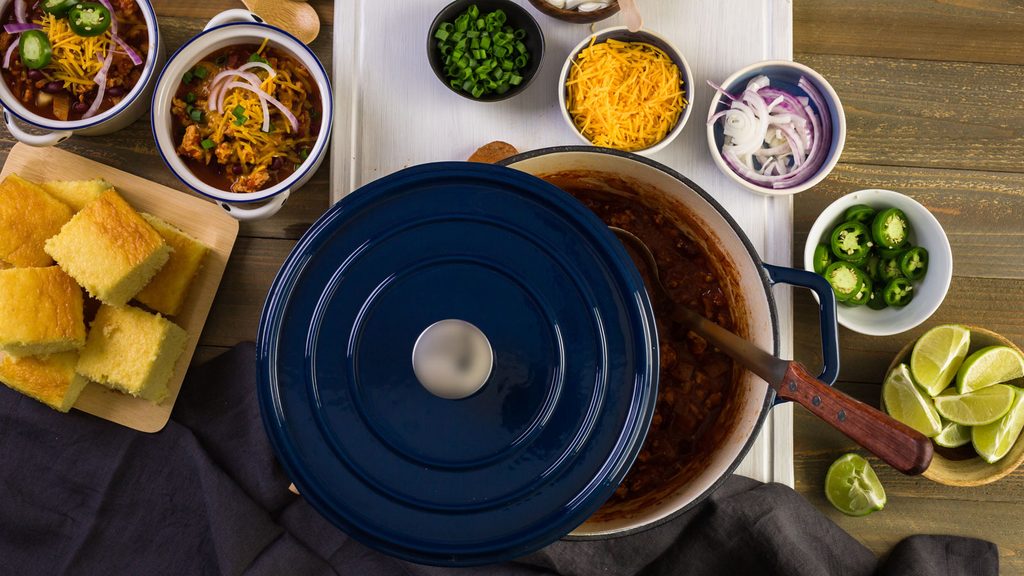How You Should Be Cleaning Your Dutch Oven

Dutch ovens are pretty heavy-duty, but they do need some maintenance from time to time. Learn how to clean a Dutch oven to get rid of stains and burnt-on bits.
Come fall, we rely heavily on our Dutch ovens to make healthy soups and stews (like this lightened-up chicken stew), and we’re not alone—it’s one of the most popular pieces of cookware used in North America.
While they may be expensive, they’re heavy-duty enough to withstand a lot of wear and tear—if you take good care of them. Although they can be cleaned easily with soap and warm water, after many uses, burnt-on bits can build up and be difficult to remove.
If you have a mess that a soapy sponge can’t handle, here’s how to clean a Dutch oven.
1. Use a non-scratch sponge
Before you get started, forget using steel wool or stainless steel scrubbers to clean the pot. Soft, non-abrasive sponges are the best way to avoid chipping enamelled coating. If that happens, there’s no going back and you won’t want to use the pan anymore. The exposed cast iron can rust, or worse, chipped pieces can make their way into your food. A replacement may be covered under your warranty, but it’s not guaranteed.
2. Soak in a baking soda bath
If your Dutch oven needs a little more love than soap and water, try soaking it in a baking soda bath. Bring four cups of water to a boil and mix in two heaping tablespoons of baking soda. Simmer the mixture for a minute or two before turning off the heat. Cover it with a lid and let it sit for about 15 minutes. Then, empty the pot and attack any burnt-on bits with a plastic scraper. Let the pot cool and clean it with regular soap and water. (Also, you don’t need dangerous chemicals to get last week’s dinner remains out of the oven.)
3. Rub on a baking soda paste
For serious built-on grime where a soak isn’t enough, try making a paste using 3 tablespoons of baking soda and one tablespoon water. Using your fingers or an old toothbrush, rub small amounts of the paste onto the stains. Don’t be afraid to rub some of the paste on the outside of the pot, either. Cover the pot and let it sit overnight. The next morning, those stains should wash right off with soap and water.
4. Look for a special enamelled cast-iron cleaner
Most cast iron companies use a proprietary cleaner. But if you feel better about sticking with the recommended cleaner, go for it. After all, regular old baking soda has been known to take care of 99 percent of stains.
Next, check out vinegar cleaning hacks that’ll save you money.




